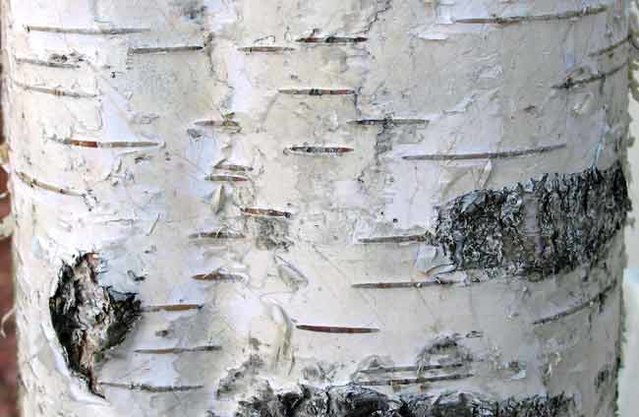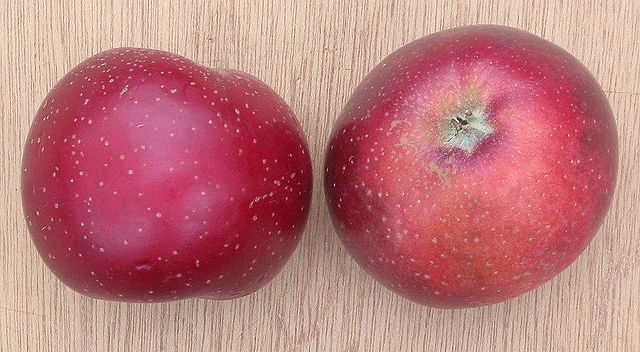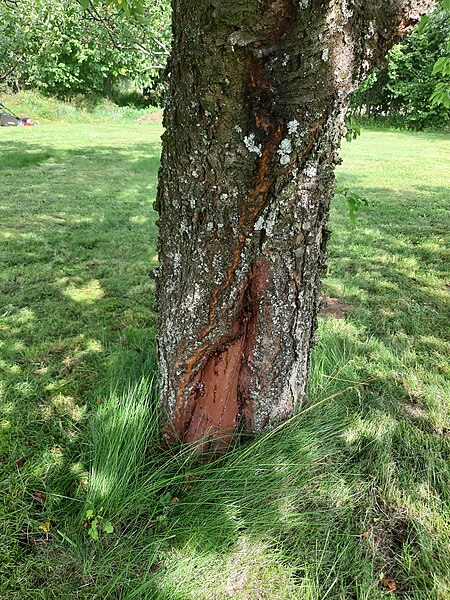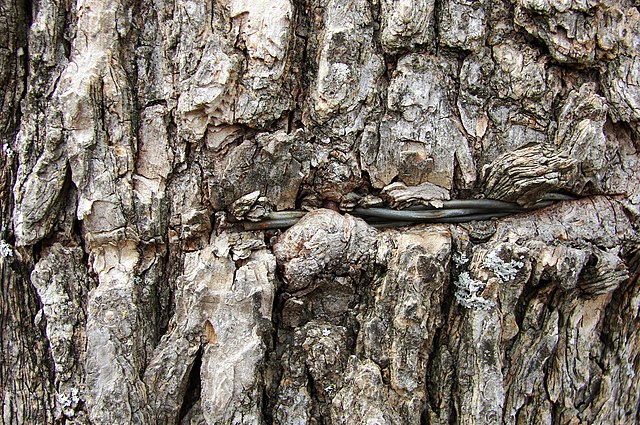A lenticel is a porous tissue consisting of cells with large intercellular spaces in the periderm of the secondarily thickened organs and the bark of woody stems and roots of gymnosperms and dicotyledonous flowering plants. It functions as a pore, providing a pathway for the direct exchange of gases between the internal tissues and atmosphere through the bark, which is otherwise impermeable to gases. The name lenticel, pronounced with an, derives from its lenticular (lens-like) shape. The shape of lenticels is one of the characteristics used for tree identification.
The dark horizontal lines on silver birch bark are the lenticels.
Lenticels on apples
Lenticels on Prunus serrula
Lenticels on wild cherry or gean
Bark is the outermost layer of stems and roots of woody plants. Plants with bark include trees, woody vines, and shrubs. Bark refers to all the tissues outside the vascular cambium and is a nontechnical term. It overlays the wood and consists of the inner bark and the outer bark. The inner bark, which in older stems is living tissue, includes the innermost layer of the periderm. The outer bark on older stems includes the dead tissue on the surface of the stems, along with parts of the outermost periderm and all the tissues on the outer side of the periderm. The outer bark on trees which lies external to the living periderm is also called the rhytidome.
The bark of Pinus thunbergii is made up of countless shiny layers.
Damaged bark of a cherry tree
Living tree bark enveloping barbed wire
Bark of mature mango (Mangifera indica) showing lichen growth








